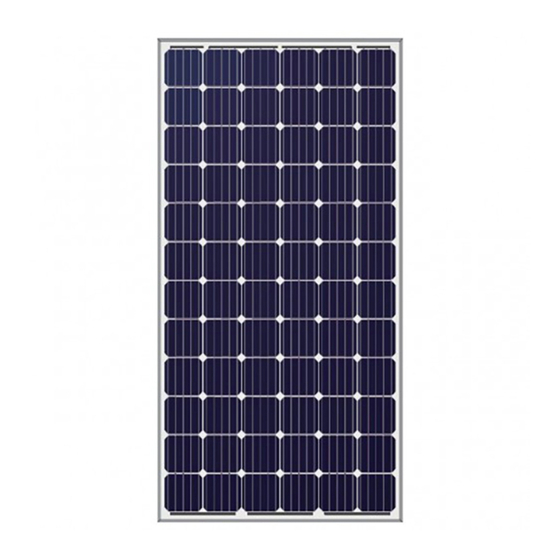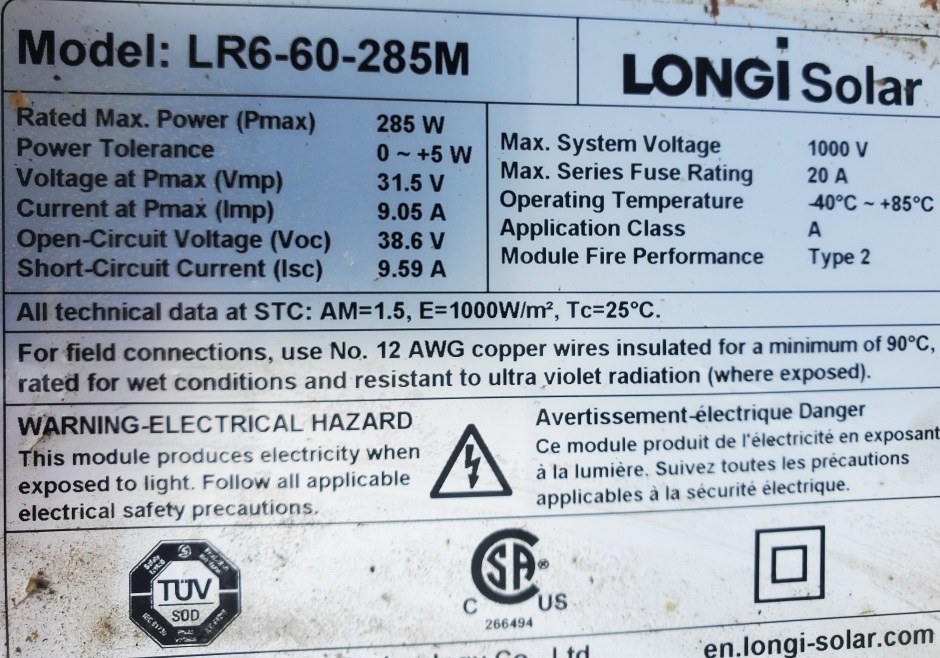Description
Please review Shipping Policy
We cannot sell these less than 10 pcs per pallet load because they break too easily when transported and repackaged horizontally
These panels have never seen the light of day (never been unpacked or used) , but have been stored outside for more than 3 yrs, (palletized)
| Mechanical Data |
|
| Technology: | Monocrystalline (Mono) |
| Dimensions: |
64.96 x 39.02 x 1.57 inches |
| Weight: | 40.13 lbs |
| Cell Orientation: | 60 (6×10) |
| Junction Box: | IP67, Three Diodes |
| Output Cable: | 4mm², 1000mm in Length |
| Connector: | MC4 or MC4 Compatible |
| Operational Temperature: | -40°C ~ +85°C |
| Power Output Tolerance: | 0~ +5W |
| Maximum System Voltage: | DC1000V (IEC) |
| Maximum Series Fuse Rating: | 15 Amps |
| Nominal Operating Cell Temperature: | 45±2°C |
| Application Class: | Class A |
| Electrical Data |
|
| Maximum Power (Pmax/W): | 285 Watts |
| Open Circuit Voltage (Voc/V): | 38.60 Volts |
| Short Circuit Current (Isc/A): | 9.59 Amps |
| Voltage at Maximum Power (Vmp/V): | 31.50 Volts |
| Current Maximum Power (Imp/A): | 9.05 Amps |
| Module Efficiency: | 17.40% |
| Front Side Maximum Static Loading: | 5400Pa |
| Rear Side Maximum Static Loading: | 2400Pa |
| Hailstone Test: | 25mm Hailstone at the Speed of 23m/s |
| Datasheets |
|
| Document | Type |
| Specifications | |
| Manual |






